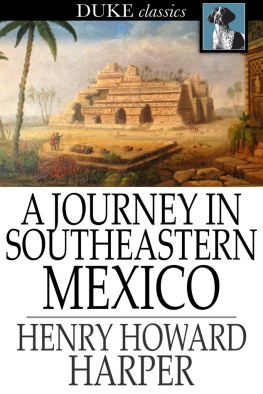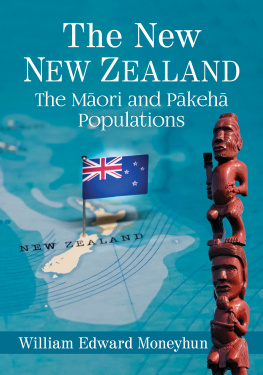PREFACE.
Table of Contents
These letters may be of interest to those who, like myself, have taken part in the colonization of New Zealand. My own share in it was limited to the South Island, the Province of Canterbury, with its Goldfields, in the Diocese of Christchurch. There may be also others who have friends and relatives in New Zealand, or who are generally mterested in the great progress which the country has made in late years, to whom these letters may give useful information.
They are chiefly personal, perhaps none the less readable for that. Incidentally, they touch on problems of great importance which the Church in New Zealand has had to meet. Questions of Church Government and discipline; the position of the Laity; their proper share in a self-governing Church, which has never been established; their responsibility for the management of Church Finance, and the maintenance of the Ministrysuch questions as arise naturally in a Free Church in a Free State. Questions, too, which at some future date may have to be tackled by the Mother Church at Home. The organization of the Church in New Zealand is now fairly complete. It governs itself by means of General and Diocesan Synods. It is in close spiritual communion with the Mother Church, but in all matters of good government it has to look to itself.
Apart from these larger matters, I trust that these letters will find a welcome amongst the numerous friends and fellow-workers with whom I have spent so many happy years in New Zealand. A country not nearly the size of many of the Dominions of our Empire, but in climate, natural resources, and especially in the character of its people, second to none, whether for material prosperity, or general happuiess of the conditions of life.
To have had the opportunity of pioneer work, with others, in such a country, with so great a future before it, is a privilege I cannot over-estimate, as I look back upon the last fifty years.
HENRY W. HARPER.
London, 1914.
ILLUSTRATIONS.
Table of Contents
| PAGE |
| H. J. C. Harper, D.D. | 42 |
| River. Waimakariri | 92 |
| Arthur's Pass, Otira | 96 |
| Otira Gorge | 130 |
| 132 |
| West Coast Road. Cedars | 160 |
| West Coast Road | 168 |
| Henry W. Harper, M.A. | 186 |
| St. Mary's Church, Timaru | 334 |
| Nave | 344 |
| Tower | 348 |
| Map of New Zealand | at end |
LETTERS FROM NEW ZEALAND
Table of Contents
18571911
I.
Table of Contents
Christmas Day, 1856,
Christchurch, New Zealand.
My dear St. John,
Here I am in the Ultima Thule of the Southern Seas, New Zealand, in the South Island, at Christchurch, the principal town of the Settlement of Canterbury, which has not yet completed its first decade of existence. As you may imagine it is the antipodes of all our old experience at Eton and Oxford.
Let me give you an example from the manner of my Christmas Eve yesterday. About 2 p.m. I was on the top of the pass through which a rough bridle track runs across the hills which separate Christchurch from Lyttelton harbour, affording the only means of communication by land between the harbour and the Canterbury plains, very steep, and about 1,200 feet in height. I was sittmg there on a convenient rock, contemplating a magnificent view on either side: Lyttelton harbour to the east, a long and rather narrow inlet, indented with bays, encircled with a tumbled mass of hills of bold and broken outline, touching some 3,000 feet at their highest point. These hills, of tertiary volcanic origin, form an extensive peninsula connected with the Canterbury Plains by only a few miles of low ground. It was on this peninsula a century ago that Captain Cook landed, and with him the well known botanist, Sir Joseph Banks, whose name it bears"Banks' Peninsula." Captain Cook seems to have been content with a distant view of the Canterbury country, and I am told that in his chart he describes the Peninsula as an island.
Sitting there and looking down on this grand view I could not but notice how widely it differed from what I have seen in the hill country of Scotland and Wales; the general colouring of vegetation and grass, and the effect of the brilliant atmosphere over all is so different. This may be due to the absence of the humidity of climate which is characteristic of the old country. Sunshine clear and steely bright lights up every nook and crevice of the hills; you can see distinctly at a far greater distance than at home; but it robs the scenery of the depth and varied tones of colour, the charm and mystery of the neighbourhood of Snowdon or the Trossachs, or the softer scenery of the Westmoreland Lake country. In among the rocks and on the steep shelving sides of sheltered valleys there are shrubs and plants unknown to me, besides various kinds of Veronica, white and purple, tall palm trees, locally termed Cabbage trees,[1] masses of New Zealand flax, Phormium tenax, with glossy green spear-shaped leaves, some of them ten feet in length, and brown-red stalks, from which hang scarlet blossoms in tiers; also fuchsia trees with twisted trunks and branches. I could see plenty of moss, for springs are abundant in this well-watered country; a land of brooks and fountains which water the hills, and a variety of ferns. In the distance in the deep mountain valleys and on the hill sides are extensive forests of what I take to be pines. I think if you tried to sketch it in water colours you would have to have first a general wash of yellowish brown, with indigo rather than blue for all green foliage; and you would find in the clear hard quallty of the atmosphere an absence of the soft purple and blue shadows which lend such beauty to our home scenery.
Now for the western view from my rocky seat, different in contour but not in general colouring; a vast expanse of plain forming the northern end of the Canterbury plains, ending on the North-east in the Pacific Ocean. It seems absolutely flat, but I believe it rises a good deal as it approaches the outlying flanks of the Southern Alps which form the great western "Divide" of the Canterbury province; their snow-capped peaks cannot be less than seventy miles from where I was sitting, but in this clear atmosphere they scarcely seemed half that distance. Imagine, as a foreground, a sort of yellowish brown carpet of tussock grass, here and there lit up with ribbons of waterways sparkling in the sunlight; at its North-eastern edge a curve of fifty miles of sand, fringed with breaking foam, losing itself in the distance against the great rocky headland of the "Kaikoura" mountains. The Kaikouras are over 5,000 feet in height, a splendid bulwark meeting the waves of the Pacific, known in the Maori tongue as the "Lookers on." On the plain, some eight miles away, I could make out a few scattered houses which so far form the town of Christchurch; here and there evidences of cultivation, a few tracks and roads, some slender spires of smoke, and now and then there came the faint echo of voices of cattle and sheep, but otherwise a great silence brooded over this new land. The panorama of the Southern Alps is beyond my powers of description; very strange it seemed that there should be such an amount of snow in midsummer, but I am told that the level of perpetual snow in the South Island is much lower than in Switzerland; so that an ascent of Mt. Cook, which reaches an altitude of 12,300 feet, whenever attempted, will be found as difficult as that of Mt. Blanc with its 15,000 feet.













